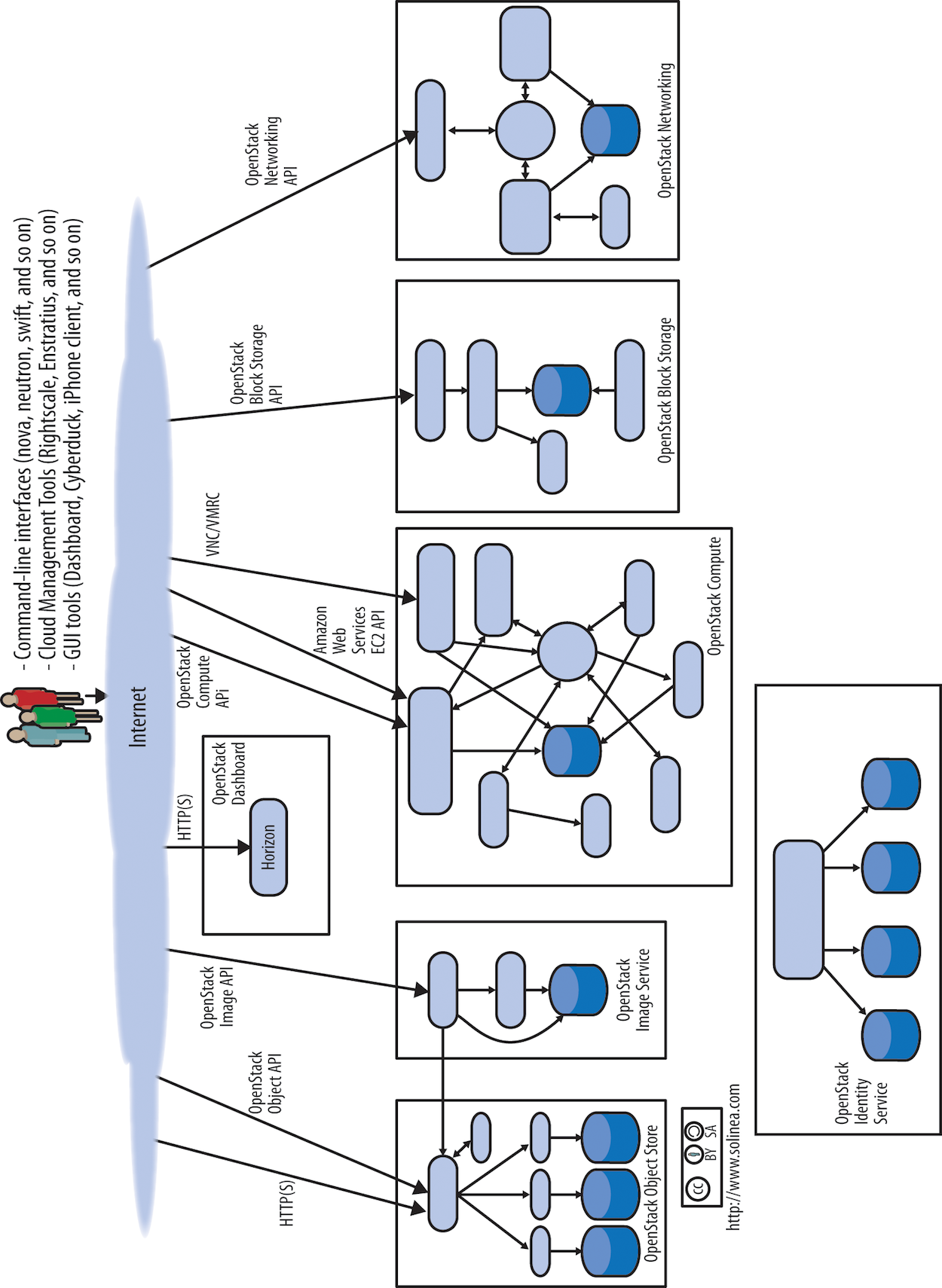Part I. Architecture
Designing an OpenStack cloud is a great achievement. It requires a robust understanding of the requirements and needs of the cloud’s users to determine the best possible configuration to meet them. OpenStack provides a great deal of flexibility to achieve your needs, and this part of the book aims to shine light on many of the decisions you need to make during the process.
To design, deploy, and configure OpenStack, administrators must understand the logical architecture. A diagram can help you envision all the integrated services within OpenStack and how they interact with each other.
OpenStack modules are one of the following types:
- Daemon
Runs as a background process. On Linux platforms, a daemon is usually installed as a service.
- Script
Installs a virtual environment and runs tests.
- Command-line interface (CLI)
Enables users to submit API calls to OpenStack services through commands.
As shown, end users can interact through the dashboard, CLIs, and APIs. All services authenticate through a common Identity Service, and individual services interact with each other through public APIs, except where privileged administrator commands are necessary. Figure I-2 shows the most common, but not the only logical architecture for an OpenStack cloud.

Figure I-2. OpenStack Havana Logical Architecture (http://opsgui.de/1kYnyy1)
Get OpenStack Operations Guide now with the O’Reilly learning platform.
O’Reilly members experience books, live events, courses curated by job role, and more from O’Reilly and nearly 200 top publishers.

